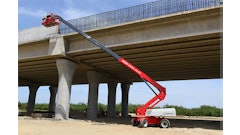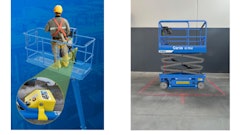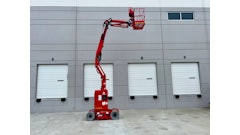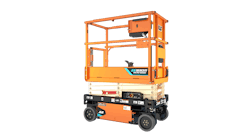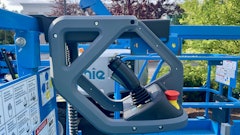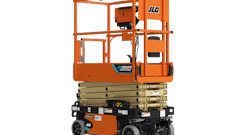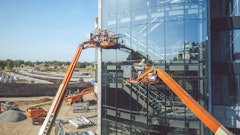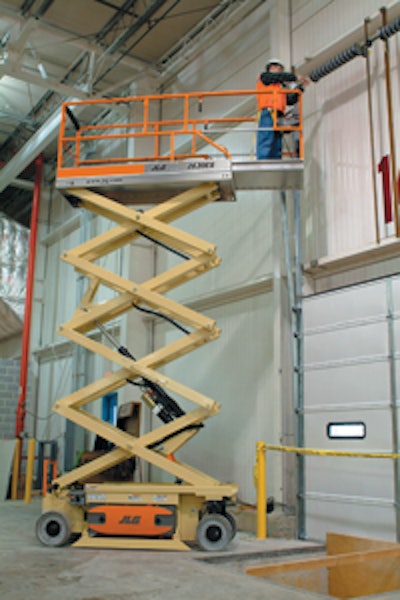
The type of power source used to run the rough-terrain scissor lifts on your next job often boils down to whatever is available at the local rental center. But when you do have a choice, there are certain factors you should consider to match the power source to the application.
In North America, dual-fuel (gasoline and liquid propane) engines have historically been the preferred power. But a recent trend has seen diesel engines — which are the mainstay in Europe — gaining ground. You may also find a limited number of electric (battery powered) models.
Choosing between power sources often hinges on personal preference. Maybe you prefer one engine brand over another, or perhaps your mechanics are better versed in diesel, dual fuel or electric.
But beyond preference, an important question you will need to address is where you plan to use the lift. If the answer is indoors or in environmentally sensitive areas, an electric or dual-fuel model is the most likely alternative due to emissions restrictions.
"When it comes to selecting a power source, you will want to know if you have any limitations," says Rafael Bazzarella, marketing coordinator, Skyjack. One of the most common limitations centers around emissions — either reducing them or eliminating them entirely. "On some jobs, there may be regulations that restrict the amount of exhaust that can be emitted from an engine."
Diesels have traditionally been barred from many of these jobsites. But with the introduction of Tier II engines, and looking ahead to Tier III designs, you may begin to see more of them allowed.
Given the EPA regulations that dictate the release of fewer and fewer emissions, diesels are catching up in cleanliness, says Mark Mohn, product manager at JLG. Plus, scrubbers, either from lift manufacturer or aftermarket providers, may reduce emissions enough to get you indoors.
"Diesels keep getting cleaner and cleaner," he says. "Today, diesels are almost as clean, and in some cases cleaner, than a dual-fuel machine. That has added to their popularity in the North American market."
Consider fuel logistics
Another factor that can weigh into your decision is the type of fuel used in other equipment on the jobsite. "A lot of construction equipment runs on diesel fuel so it's readily available," says John Norton, product manager for rough-terrain scissor lifts at Genie.
That could make things easier from a logistics standpoint, adds Mohn. "If you have a lot of diesel-powered equipment on the job, and there's diesel fuel available, you don't want to have to bring a gas truck in every couple of days for one machine. If a diesel truck comes in to fill up everything else, a lot of times that will drive what power source a contractor has for the scissor lift used on the jobsite."
Other diesel advantages
While performance — speed of operation, lift cycles, etc. — will be comparable for all power sources, there can be differences related to longevity, maintenance and fuel economy. Diesel engines, by nature of their design, will typically last longer than a gasoline model, says John McKibben, service manager, Snorkel. "Usually, a diesel engine outlasts a gasoline engine because it burns an oil-based fuel and fires under compression," he says.
A diesel engine is also better suited for the type of duty cycle that aerial work platforms are asked to handle day in and day out. "The guys will start the engine and idle it for a long period of time," says Mohn. "Diesels are just better suited to that, whereas a dual-fuel engine is designed to run at higher rpms."
In addition, you can typically expect better fuel efficiency with a diesel-powered rough-terrain scissor lift — as much as 15% to 20%, according to Mohn, depending on how it's operated.
Regardless of the power source you choose, you will want to maintain it for long life, says Bazzarella. It's important to perform the following preventive maintenance:
- Check the oil level (diesel and dual fuel).
- Replace oil and fuel filters as recommended by the manufacturer.
- Check coolant levels (diesel and dual fuel).
- Check batteries for corrosion on terminals (electric).
"All machines come with a recommended maintenance schedule," Bazzarella notes. "The best way to ensure longevity and promote a safe working machine is to follow the manufacturer's maintenance schedule."
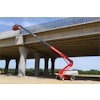
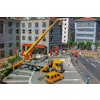


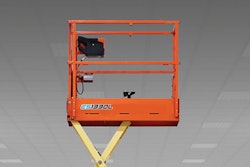


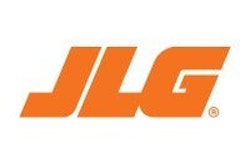



![Building Angled Sm Edit 6050b8d213f1b[1]](https://img.forconstructionpros.com/mindful/acbm/workspaces/default/uploads/2025/09/building-angled-sm-edit6050b8d213f1b1.Ygq5aAos3b.png?ar=16%3A9&auto=format%2Ccompress&crop=focalpoint&fit=crop&fp-x=0.53&fp-y=0.23&fp-z=2&h=135&q=70&w=240)
